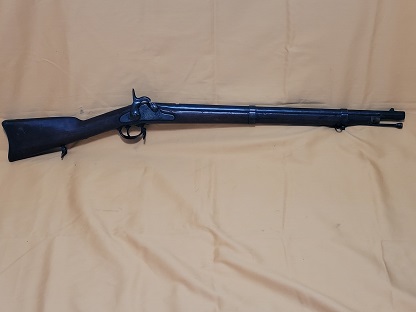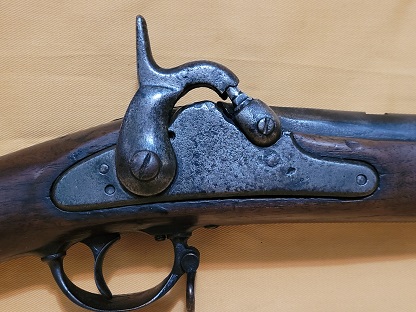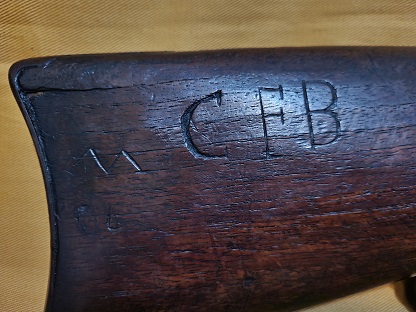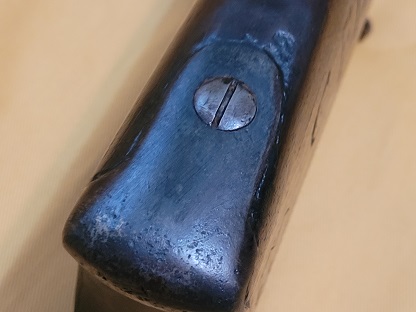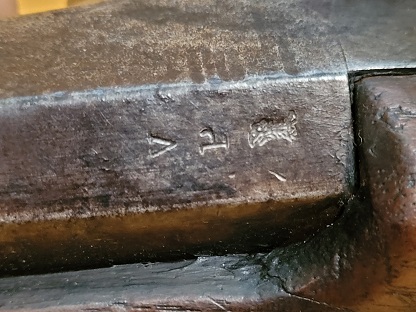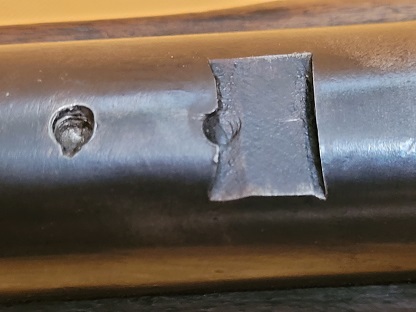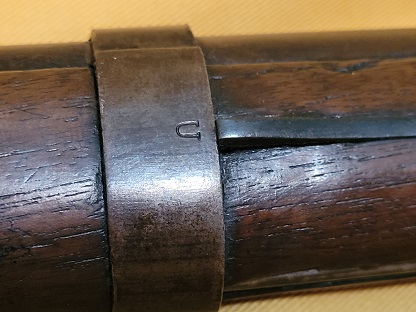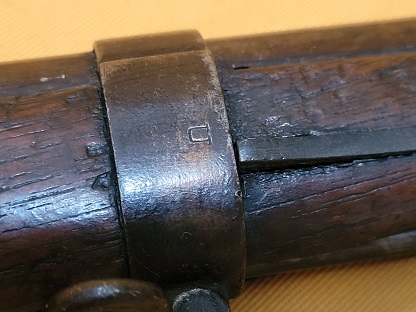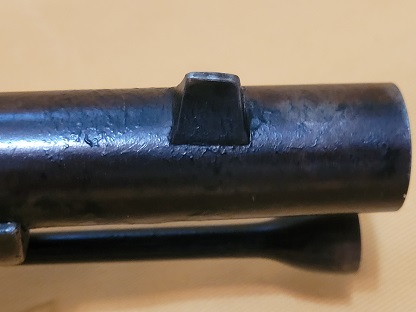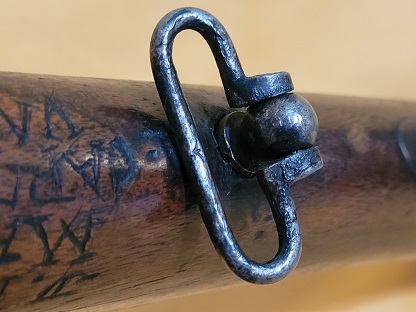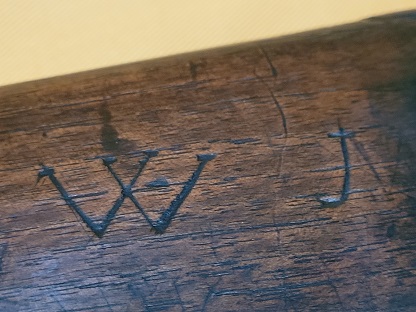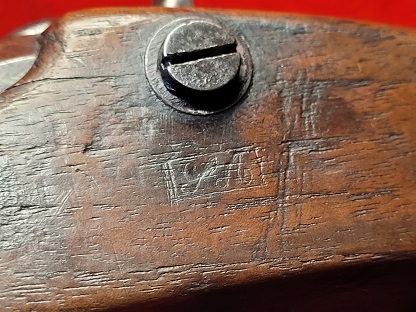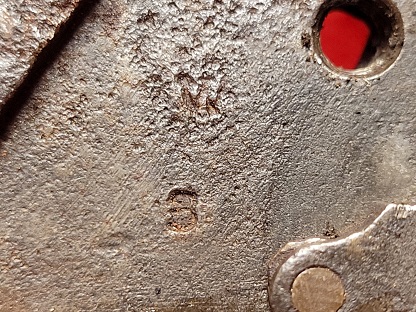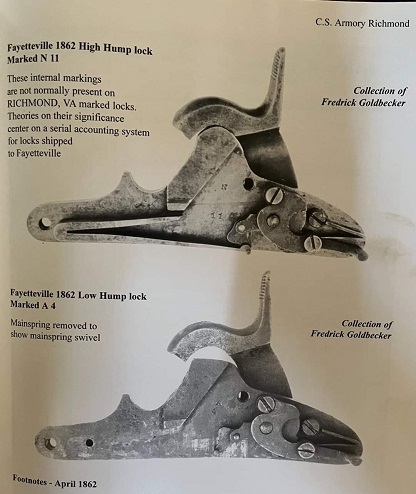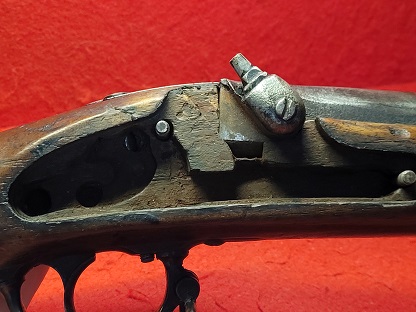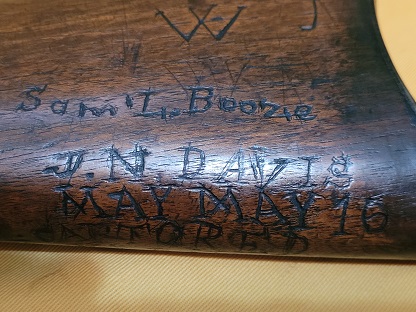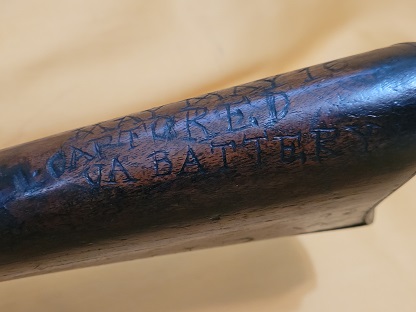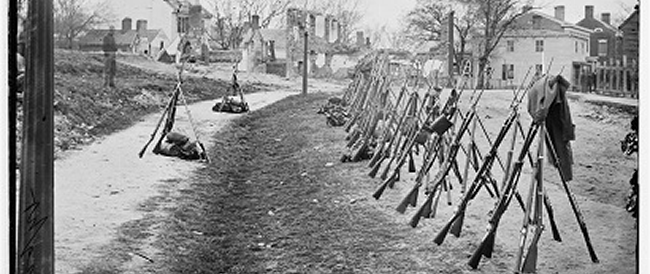
|
The Richmond Armories second largest group of long arms was the .58 caliber Rifled Carbine, with about 5,400 produced between November of 1862 and January of 1865. One thing that makes Richmond Carbines so unique is that they are the most inconsistent of Richmond-made arms in terms of features. Many Richmond carbines were assembled with a mixture of Richmond-made parts and older parts that were on hand from Harpers Ferry or parts scavenged from damaged arms and battlefield recoveries. The front sight was a very distinctive, Richmond-made “pinched” front sight that was brazed to the barrel about 1” from the muzzle. The ramrod was typically a Richmond-made, thin-shank iron rod with a tulip-shaped head and without the swell found on US M1855 and M1861 style rods. The guns were equipped with three sling swivels instead of the more conventional carbine sling bar and ring. Two swivels were mounted in the traditional long arm locations; on the trigger guard and the upper barrel band. The third was screwed into the toe of the stock about 1 ““ from the rear of the trigger guard tang. Most of the guns utilized Richmond-made stocks, with the lock mortise inlet with the distinctive “Mules Foot” bearing surface in the wood and without the additional cutouts needed to accommodate the M1855 Maynard Tape Priming lock works. This Richmond Carbine was Captured at Champions Hill By John N. Davis of Co. A 29th Wisconsin Infantry off of Samuel Booze of the Only Virginia Unit at the battle. Sam Booze was in the Botetourt Light Afrtillery. This carbie features a lock plate that was intented for the Fayettville Arsenal becuase it is blank with a letter and number stamped into the back of the lock. Early in the was the Fayettville Arsenal did not have tooling to make lockplates so Richmond made them and sent them to the NC arsenal blank.
|
